Supernovae neutrinos. How they are born, how we wait for them, and why it is interesting.
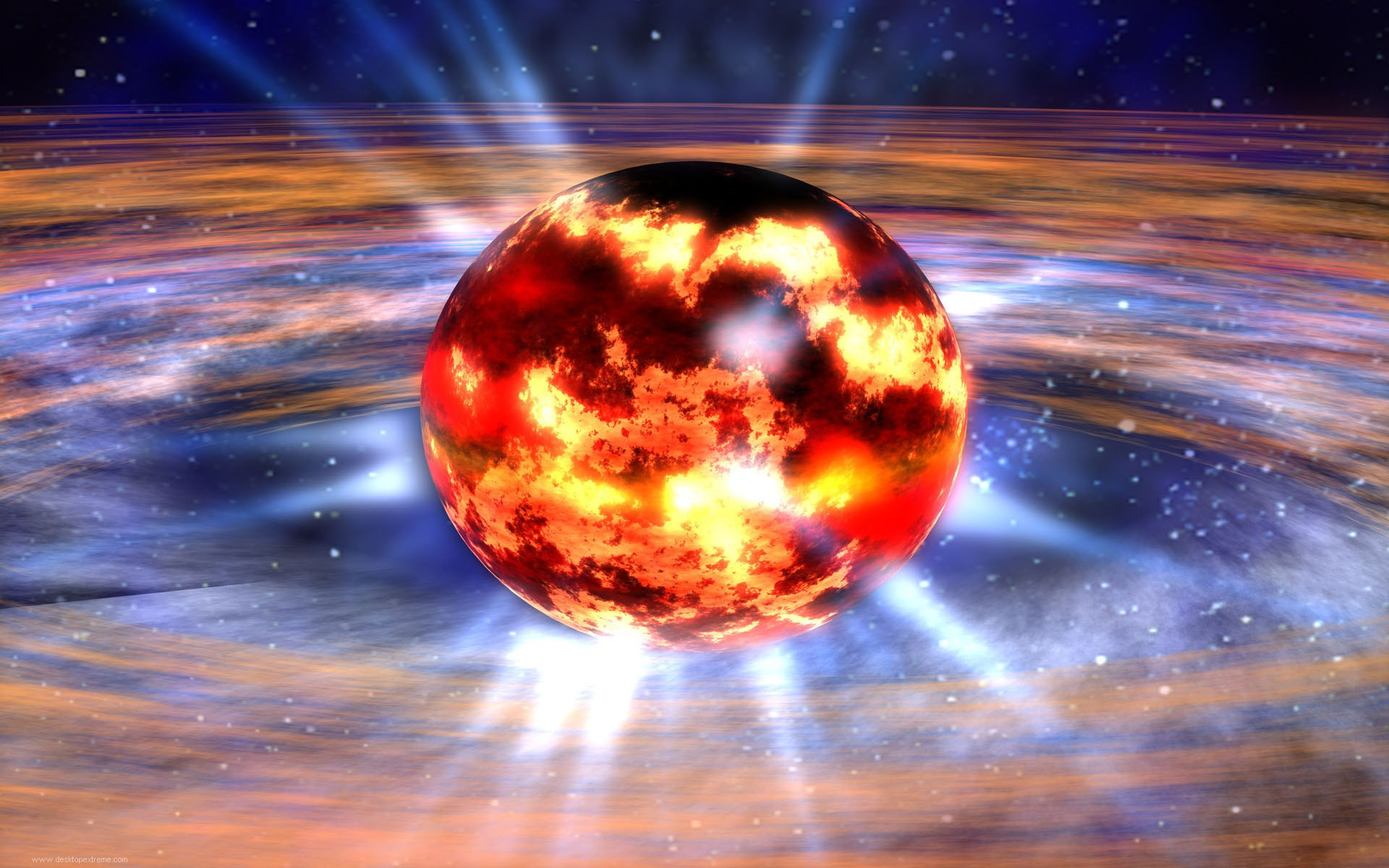
Neutrino physics is developing rapidly. A month ago, the registration of neutrinos from a gamma-ray flash in the active nucleus of a distant galaxy, a key event in neutrino astrophysics, was announced.
In this article we will talk about the registration of neutrinos from supernovae. Once, humanity was already lucky to detect them.
I’ll tell you a little about the fact that such “supernovae” are actually for animals, why they emit neutrinos, why these particles are so important to register and, finally, how they try to do this with the help of observatories at the south pole, at the bottom of the Mediterranean Sea and Baikal, under the mountains of the Caucasus and in the Apennines.
')
Along the way, we learn what “urka-process” is - who steals what from whom and why.
After about a very long break, I continue the cycle of articles on neutrino physics. In the first publication, we talked about how we came up with such a particle and how it was registered; in the second, I talked about the amazing phenomenon of neutrino oscillations. Today we will talk about particles that arrive to us from outside the solar system.
Briefly about supernovae
The stars that we see in the night sky are not in the same state forever, like everything around us on Earth. They are born, they shine steadily for a long time, but in the end they can no longer maintain the old burning and die. Here is how the life path of a star can look like the example of the Sun:
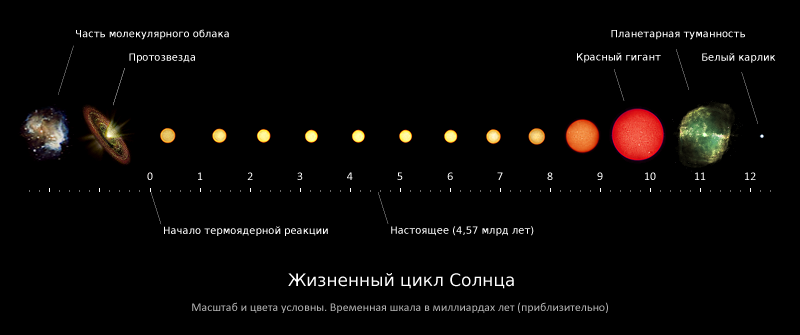
(c) Wikipedia . The life cycle of the sun
As you can see, at the end of its life, the Sun will rapidly increase from the size up to the orbit of the Earth. But the finale will be quite peaceful - the shell will be dropped and become a beautiful planetary nebula. The core of the star at the same time turn into a white dwarf - a compact and very bright object.
But not all stars end their journey as peacefully as the sun. With a sufficiently large mass (> 6-7 solar masses), a monstrous power explosion may occur, and this will be called a supernova flash.
Why the explosion?
The fuel for the stars is hydrogen. During the life of a star, it turns into helium with the release of energy. It is from here that the main energy is taken for the stars to glow. Over time, the hydrogen ends, and already helium begins to turn further on the periodic table into heavier elements. Such a process illuminates more energy and the upper layers of the star begin to swell, the star turns red and expands greatly. But the transformation of elements is not infinite, in a stable mode it can only reach iron. Further process is not energetically beneficial. And so, we have a huge, huge star with an iron core, which almost does not shine, and therefore there is no light pressure from the inside. The upper layers begin to rapidly fall on the core.
And here two scenarios are possible. The substance can quietly and peacefully, without any rotation and hesitation fall to the core. But remember, often do you manage to drain water from the bath / sink so that the funnel does not form? The slightest vibration and the substance will spin, there will be fluctuations, instability ...
A technically super-stable scenario is possible, even two candidates were observed. The star expanded and expanded and suddenly disappeared. But more interesting when the star goes racing!
Simulation of the collapse of the nucleus of a heavy star.
Many months of operation of several supercomputers have allowed us to estimate exactly how instabilities will arise and develop in the core of a contracting star.
It has already been mentioned that elements up to iron can form in the cores of stars. Where, then, did the other atomic nuclei originate in the Universe? In the course of a supernova explosion, monstrous temperatures and pressures arise that make it possible to synthesize heavy elements. Honestly, the fact that all the atoms that we see around once burned in the center of the stars still shocks me greatly. And the fact that the entire nucleus is heavier than iron should have been born in a flash of a supernova, so generally beyond awareness.
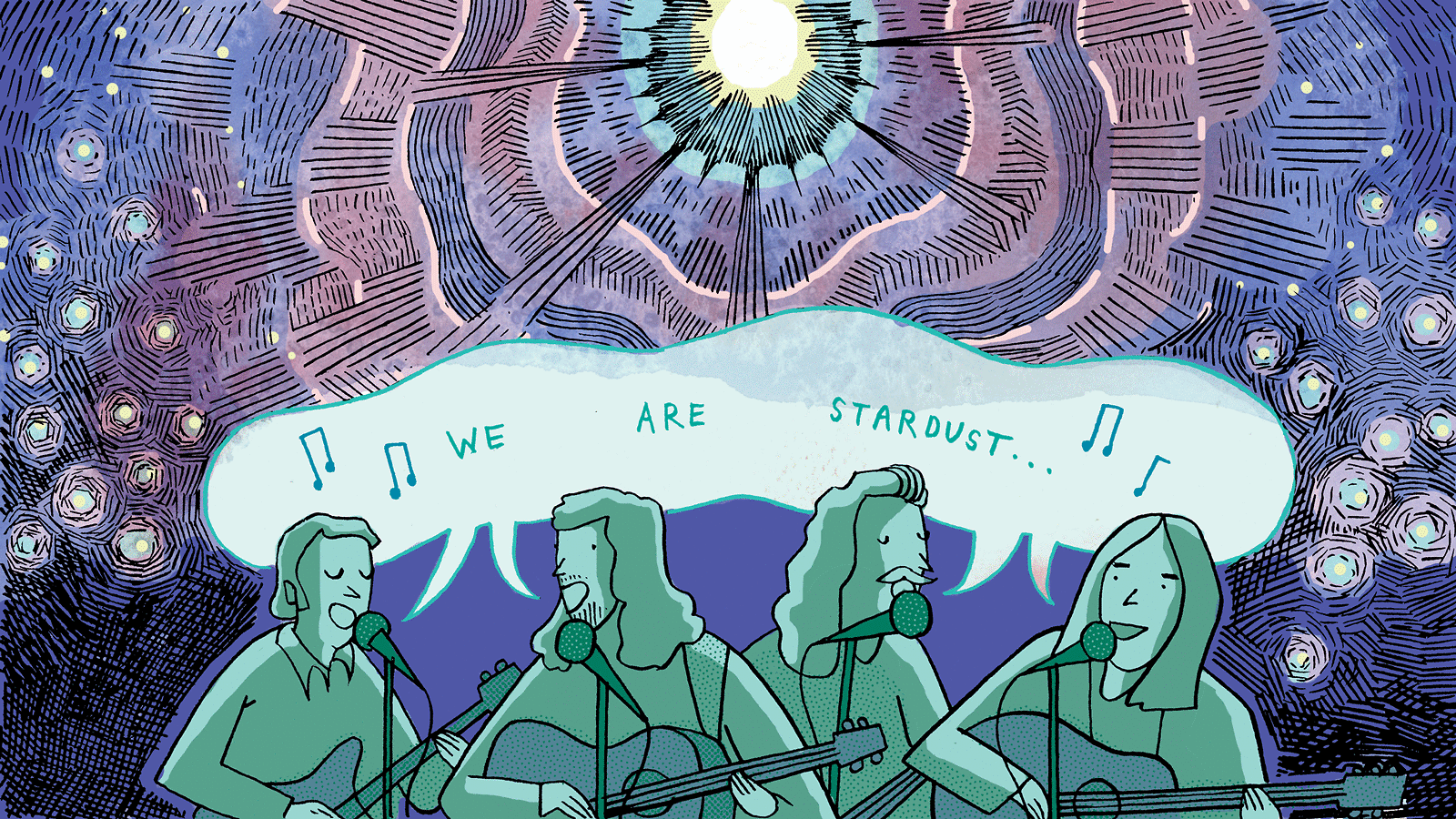
(C) Symmetry magazine
Generally speaking, there may be another reason for the explosion. A pair of stars rotates around the common center, one of which is a white dwarf. He slowly steals the substance of a partner star and increases its mass. If he dramatically drags a lot of substance on himself, then he will inevitably explode — he simply cannot keep all the substance on the surface. Such a flash was named Supernova Ia and played a key role in determining distances in the Universe. But such flashes almost do not give neutrinos, so in the future we will concentrate on the explosions of massive stars.
Urca process or who steals energy
It's time to move on to neutrinos. Problems with the creation of the theory of the explosion of supernovae were associated, as is often the case, with the law of conservation of energy. The debit / credit balance persistently did not converge. The core of the star should highlight just a huge amount of energy, but in what way? If you emit ordinary light (photons), they will be stuck in the outer shells of the nucleus. From the core of the sun photons are selected to the surface for tens or even hundreds of millions of years. And in the case of supernovae and density is much higher.
The solutions were found by George Gamov and Mario Schoenberg. Once being in Rio de Janeiro, Gamow played roulette. Watching money turn into chips and then leave the owner without any resistance, it occurred to him how one could apply the same mechanism to the stellar collapse. Energy must pass into something that interacts extremely weakly. As you might have guessed, such a particle is a neutrino.
The casino where this insight came was called “Urca” (Casino-da-Urca). Thanks to Gamov, this process became known as the Urca process. According to the author of the model, exclusively in honor of the casino. But there is a persistent suspicion that the Odessa and the noble
So, neutrino stole the lion's share of energy from an exploding star. Only thanks to these particles the explosion itself becomes possible.
What are the neutrinos we are waiting for? The star, like our usual substance, consists of protons, neutrons and electrons. In order to comply with all conservation laws: electric charge, amounts of matter / antimatter, it is most likely the birth of an electron neutrino.
Why are neutrinos from supernovae so important?
Virtually the entire history of astronomy, people studied the universe only with the help of incoming electromagnetic waves. They carry a lot of information, but much remains hidden. Photons are easily scattered in the interstellar medium. For different wavelengths, interstellar dust and gas are opaque. In the end, the stars themselves are completely opaque to us. Neutrinos are able to bring information from the very epicenter of events, talking about the processes with frantic temperatures and pressures - with the conditions that we hardly ever get in the laboratory.
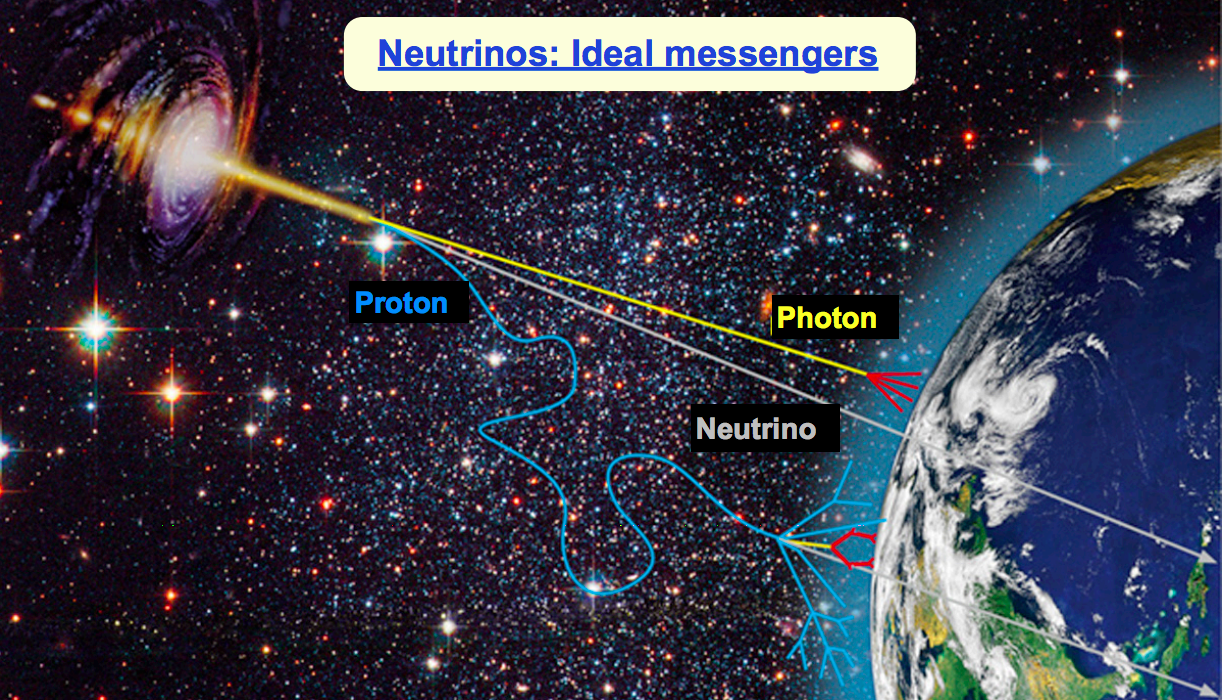
(c) Irene Tamborra. Neutrinos are ideal carriers of information in the Universe.
We know very little how the substance behaves under such extreme conditions as are achieved in the core of an exploding star. All sections of physics are intertwined here: hydrodynamics, particle physics, quantum field theory, gravity theory. Any information "from there" would greatly help in expanding our knowledge of the world.
Just imagine, the energy carried by neutrinos is 100 (!) Times greater than that carried by photons in the optical (visible) range. It would be incredibly interesting to get this amount of information. Neutrino radiation is so powerful that these almost non-interacting particles would kill a person if he were near an explosion. Not the explosion itself, but only the neutrino! A particle whose mileage in lead will be kilometers - 10 million times the radius of the Earth's orbit.
The big bonus is that neutrinos should come to us even before the light signal! After all, photons need a lot of time to get out of the star's core, while neutrinos will pass through it without hindrance. Advance can reach the whole day. Thus, the neutrino signal will be a trigger to redirect all available telescopes. We will know exactly where and when to look. But the very first moments of the explosion, when the brightness soars and falls exponentially - the most important and interesting for science.
As already mentioned, a supernova explosion is impossible without a flash of neutrinos. Heavy chemical elements simply cannot form without it. But without a flash of light - quite
is possible . In this case, the neutrino will be our only source of information about this unique process.
1987 Supernova
The 70s were marked by the rapid growth of theories of great unification. All four fundamental forces dreamed of combining a single description. Such models had a very unusual consequence - the usual proton had to disintegrate.
Several detectors were built to search for this rare event. Among them, the Kamiokande facility, located in the mountains of Japan, stood out.

Wikipedia. Detector Kamiokande.
The huge water tank made the most accurate measurements for that time, but ... did not find anything. In those years it was just the dawn of neutrino physics. It was made, as it turned out, a very far-sighted decision to slightly improve the installation and reorient on neutrinos. The installation was improved, for several years they struggled with interfering background processes and in early 1987 began to receive good data.
And here, almost immediately after switching on, February 23:

The signal from the supernova SN1987a in the detector Kamiokande II. On the horizontal axis, time in minutes. Source of
Extremely short and clear signal. The next day, astronomers report an outbreak of a supernova in the Magellanic cloud - a satellite of our galaxy. This was the first event when astrophysicists were able to observe the development of an outbreak from the earliest stages. It reached its maximum only in May and then slowly began to fade.
Kamiokande gave just what was expected to be seen from the supernova - electron neutrinos. But the new detector, just started to collect data ... Suspicious is it. Fortunately, he was not the only neutrino detector at that time.
In the salt mines of America was placed detector IMB. By the logic of his work, he was like Kamiokande. A huge cube filled with water and surrounded by photosensors. The particles flying quickly begin to glow, and this radiation is fixed by huge photomultipliers.
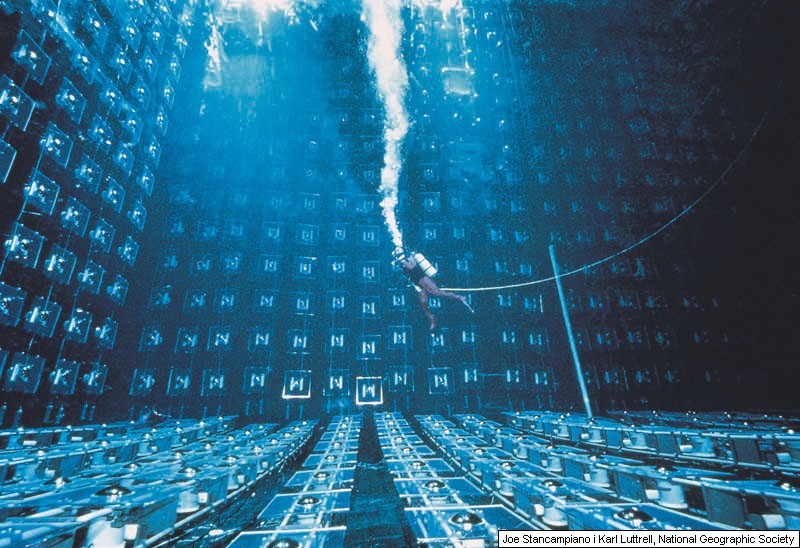
IMB detector in a former salt mine in the USA.
A few words should be said about the physics of cosmic rays in the USSR. A very strong school of physics of ultrahigh energies has been established here. Vadim Kuzmin in his work first showed the extreme importance of studying particles arriving from space - in the laboratory we are unlikely to ever get such energies. In fact, his group laid the foundations of modern physics of ultrahigh-energy rays and neutrino astrophysics.
Naturally, such studies could not be limited to theory, and since the beginning of the 80s, two experiments have been conducted at Baksan (Caucasus) under the mountain Andyrchi. One of them is focused on the study of solar neutrinos. He played an important role in solving the problem of solar neutrinos and the discovery of neutrino oscillations. I told about it in the previous article . The second, the neutrino telescope, was built specifically for recording neutrinos of enormous energies arriving from space.
The telescope consists of three layers of tanks with kerosene, a photodetector is attached to each. Such an installation allows you to restore the track particles.
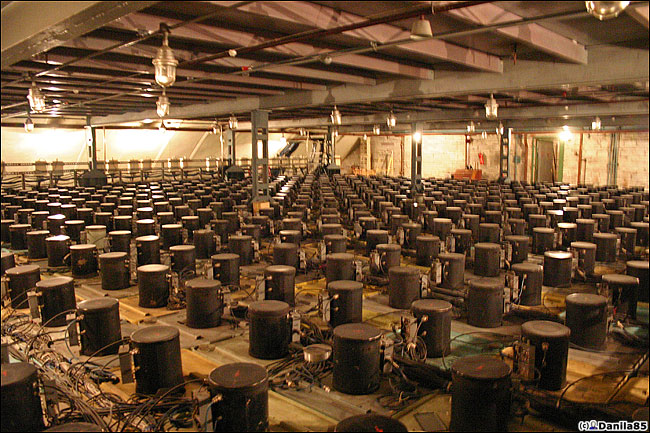
One of the layers of the neutrino telescope in the Baksan Neutrino Observatory
So, three detectors saw a neutrino from a supernova — a confident and extremely successful start into neutrino astrophysics!

Neutrinos registered with three detectors: Super-Kamiokande in the mountains of Japan, IMB in the USA and in the Baksan gorge in the Caucasus. A source
But over the years, the planetary nebula, formed by the shell of a star when it exploded, changed.

(c) Irene Tamborra. This is what the remnants of the supernova 1987 after the explosion look like.
One-time action or ...
The question is quite logical - and how often will we be so “lucky”. Unfortunately, not so much. The history of observations says that the previous supernova in our galaxy exploded in 1868, but it was not observed. And the last of the already discovered in 1604.
But! Every second somewhere in the Universe there is a flash! Far, but often. Such explosions create a diffuse background, somewhat similar to relict radiation. It comes from all sides and is approximately constant. We can quite successfully assess the intensity and energy on which to look for such events.
The picture shows the streams from all known neutrino sources:
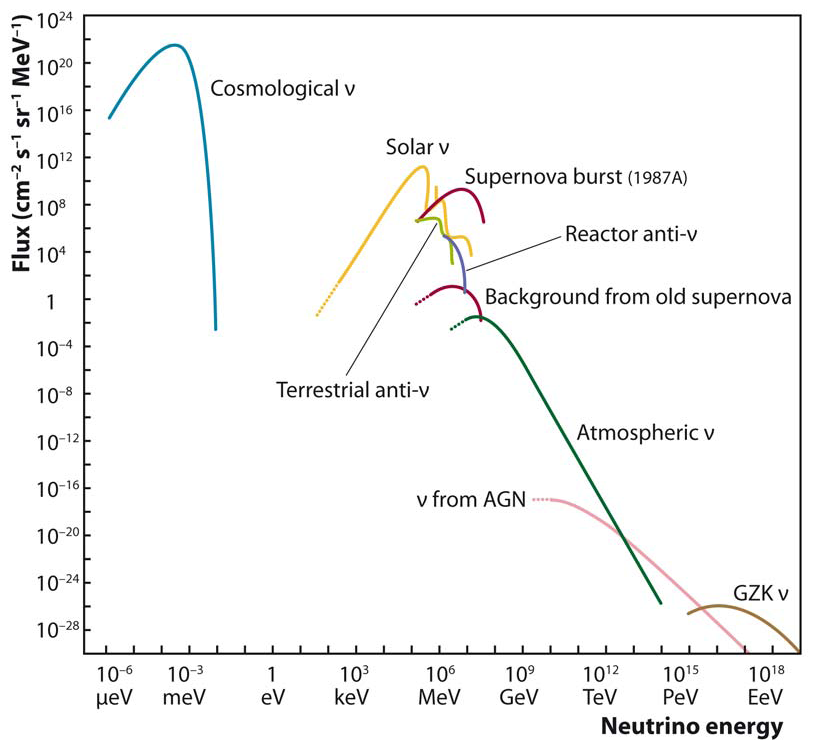
Source of The neutrino spectrum on Earth from all possible sources.
The burgundy curve is higher - this is the neutrino from the supernova of 1987, and the one that is lower is the phot from every second star exploding in the Universe. If we are sensitive enough and we can distinguish these particles from what comes, for example, from the Sun or from reactors, then registration is quite possible.
Moreover, the Super-Kamiokande has already chosen the necessary sensitivity. He needed to improve it in order. Right now, the detector is open, undergoing preventive maintenance, after which a new active substance will be added to it, which will significantly improve its effectiveness. So we will continue to observe and wait.
As now looking for neutrinos from supernovae
Two types of detectors can be used to search for events from star explosions.
The first is the Cherenkov detector. It will take a large amount of transparent dense matter - water or ice. If the particles produced by the neutrino move with a speed greater than the speed of light in the medium, then we will see a faint glow. It remains only to install photo detectors. From the minuses of this method - we see only fairly fast particles, everything that is less than a certain energy escapes us.
This is how the already mentioned IMB and Kamiokande worked. The latter was upgraded to Super Kamiokande, becoming a huge 40 meter cylinder with 13,000 photosensors. Now the detector is open after a 10 year data set. Leaks will be sealed in it, they will be cleaned of bacteria and add a little substance that is sensitive to neutrons, and it will return to the system again.

Super-Kamiokande on prevention. More large-scale photos and videos here .
You can use the same method of detection, but instead of artificial aquariums use natural reservoirs. For example, the purest waters of Lake Baikal. A telescope is now being deployed there, which will cover two cubic kilometers of water. This is 40 times the Super Kamiokande. But there is not so convenient to put detectors there. Usually a garland of balls is used in which several photosensors are inserted.

A source
A very similar concept is being implemented in the Mediterranean, where the Antares detector is built and working, it is planned to build a huge KM3Net that will view the cube. kilometer of sea water.

All is good, but in the seas a lot of all living creatures float. As a result, it is necessary to develop special neural networks that will distinguish neutrino events from passing fishes.
But do not necessarily experiment with water! The Antarctic ice is fairly transparent, it is easier to install detectors in it, it would not be so cold ... The IceCube detector is functioning at the South Pole - in the thickness of a cubic kilometer of ice solids of photosensors are soldered, looking for traces of neutrino interactions in ice.

Illustration of an event in the IceCube detector.
We now turn to the second method. Instead of water, you can use the active substance - scintillator. These substances themselves shine when a charged particle passes through them. We will search for a muon or electron born in neutrino interactions. If you type a large bath of a substance, you get a very sensitive installation.
For example, in the Borexino detector in the Apennines (Italy) slightly less than 300 tons of active substance are used.

Borexino
Chinese DayaBay uses 160 tons of scintillator.
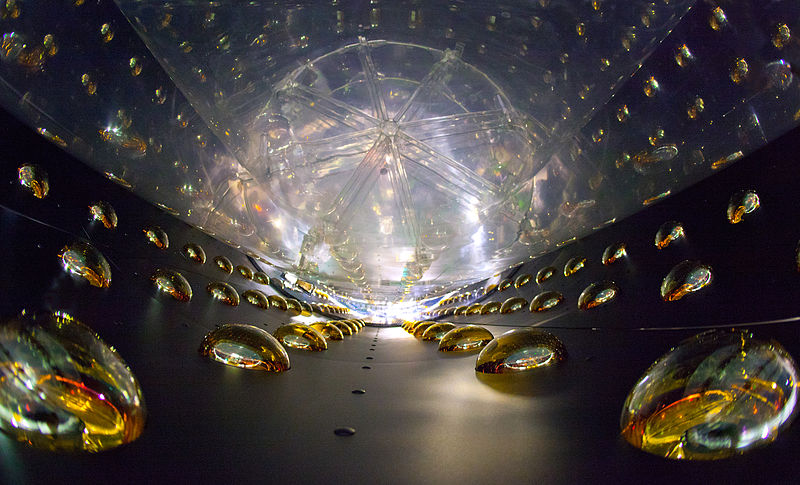
DayaBay.
But the champion JUNO is also preparing to become a champion, which will hold as many as 20,000 tons of liquid scintillator.
As you can see, there are a huge number of experiments now that are ready to register neutrinos from a supernova. I have listed only a few of them, so as not to shower you with a barrage of similar photos and diagrams.
It is worth noting that the expectation of a supernova is not the main goal for all of them. For example, KamLand and Borexino have built a magnificent map of the sources of antineutrinos on Earth - mainly reactors and radioactive isotopes in the depths; IceCube constantly monitors ultra-high-energy neutrinos from space; SuperKamiokande studies neutrinos from the Sun, from the atmosphere, and from the nearby J-PARC accelerator.
To somehow combine these experiments, even a system of triggers and alerts was developed. If one of the detectors sees something resembling an event from a supernova, then a signal to other installations immediately arrives. Also, gravitational telescopes and optical observatories, which are reorienting their instruments towards a suspicious source, are immediately notified. Even amateur astronomers can subscribe to alerts and, if lucky, they can contribute to these studies.
But, as colleagues at Borexino say, the signal from a supernova is often caused by a cleaner who finds herself among the cables ...
What do we expect to see if we are a little lucky? The number of events is highly dependent on the volume of the detector and ranges from an uncertain 100 to a squall of a million events. What to say about the next generation of experiments: Hyper-Kamiokande, JUNO, DUNE - they will become much more sensitive.
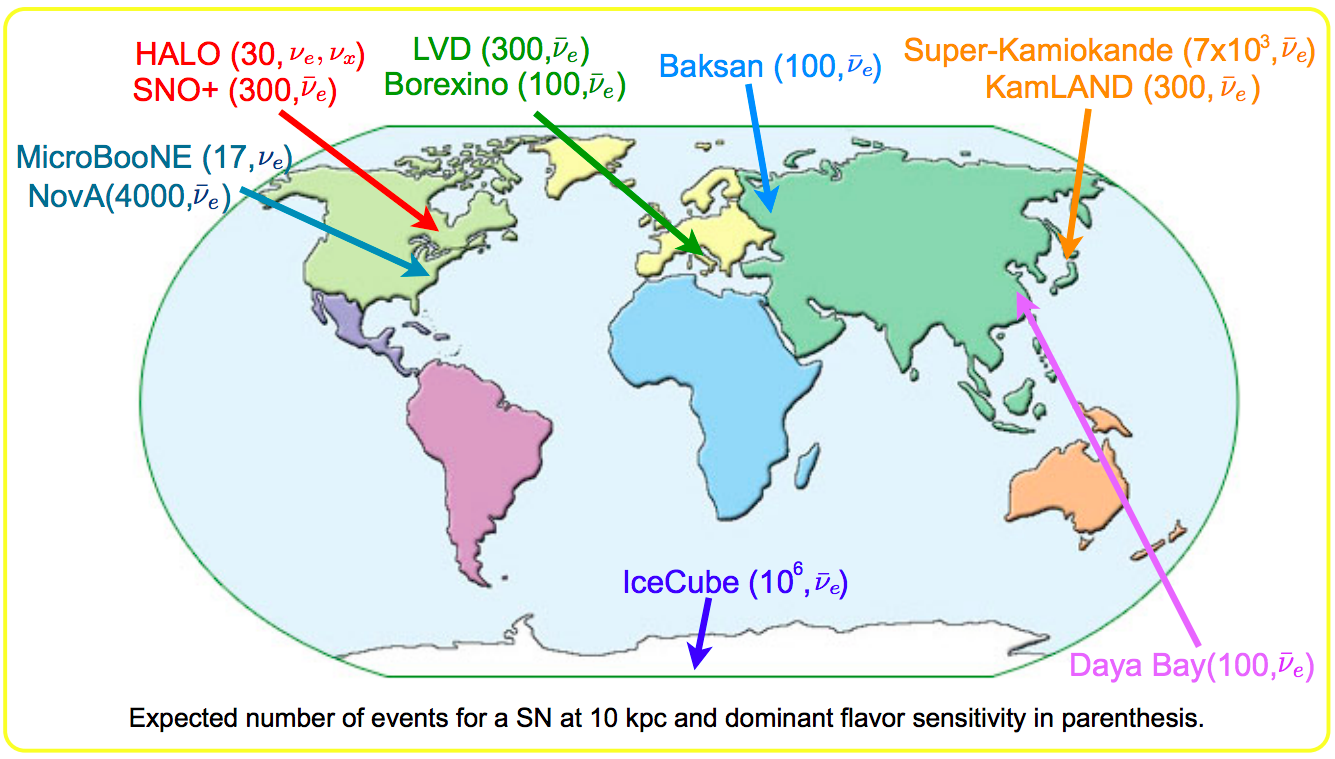
What would we see now in the event of a supernova explosion in our galaxy.
Tomorrow, a supernova may well flare up in the galaxy and we will be ready to receive a message from the very epicenter of the monstrous explosion. As well as coordinating and directing available optical telescopes and gravitational wave detectors.
PS I would like to say a special thank you to CERNach , who issued a moral kick for writing an article. I strongly advise you to subscribe if you are interested in news / photos / memes from the world of particle physics.
Source: https://habr.com/ru/post/373669/
All Articles